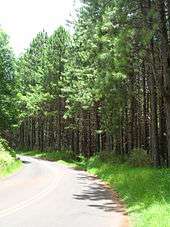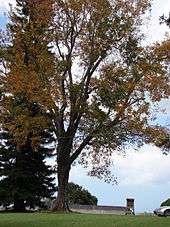Piiholo

Piʻiholo is a mountain summit on the island of Maui in Hawaii. It is at 20°51′7″N 156°17′33″W / 20.85194°N 156.29250°WCoordinates: 20°51′7″N 156°17′33″W / 20.85194°N 156.29250°W and has an elevation of 689 meters (2,260 feet).[1]
Its soils are mostly dark reddish brown silty clays developed on long-weathered volcanic ash which supports ranchland where cattle and horses are raised.[2] There also is a headquarters unit of the Maui Invasive Species Committee (MISC)[3] at the Haleakala Experiment Station of the University of Hawaii.[4] The nearest town is Makawao.
The major landowner in the area is the family descended from Henry Perrine Baldwin (1842–1911).[5] His son Henry Alexander Baldwin created the Piʻiholo Ranch out of the larger Haleakala Ranch, named after Haleakalā, the highest point in Maui. The ranch now features eco-tourism.[6] The endangered Hawaiian goose Branta sandvicensis known as Nēnē in the Hawaiian language, is being reintroduced here under supervision of Peter Baldwin.[7][8]
References
- ↑ U.S. Geological Survey Geographic Names Information System: Piiholo
- ↑ "Web Soil Survey".
- ↑ "Maui Invasive Species Committee (MISC)". web site. Hawaii Invasive Species Council. Retrieved 2010-01-13.
- ↑ "Haleakala Experiment Station, Maui County". web site. University of Hawai‘i - College of Tropical Agriculture and Human Resources. Retrieved 2010-01-13.
- ↑ "History: 7 Generations - a paniolo legacy". web site. Piʻiholo Ranch. Retrieved 2010-01-13.
- ↑ "Hawaii’s Newest and Longest Side-by-Side Zipline Launches Operation in Upcountry Maui". web site. Piʻiholo Ranch. February 16, 2009. Retrieved 2010-01-13.
- ↑ "Safe Harbor Agreement for the introduction of the nene to Piiholo Ranch, Maui" (PDF). State of Hawaii, Department of Land and Natural Resources. August 2004. Retrieved 2010-01-13.
- ↑ Bill Standley (August 2004). "Ranchers Advance Recovery of Rare Hawaiian Bird". web site. Environmental Defense Fund. Retrieved 2010-01-13.
